Multiply / Divide Fractions -> numerator
Numerator
In a fraction, the numerator is the top number that represents the number of equal parts being considered. It is the part of the fraction that tells you how many parts of the whole you have.
Example:
In the fraction 3/5, the numerator is 3. This means that out of the 5 equal parts, we have 3 of them.
Study Guide:
- Definition: The numerator is the top number in a fraction that represents the number of equal parts being considered.
- Example: In the fraction 4/7, the numerator is 4, indicating that there are 4 parts of the whole.
- Understanding: The numerator is used to express a part of a whole or a part of a group.
- Application: To find the numerator in a fraction, look at the top number of the fraction.
Understanding the numerator is essential in working with fractions and understanding their relationship to whole numbers and other fractions.
[Numerator] Related Worksheets and Study Guides:
.◂Math Worksheets and Study Guides Sixth Grade. Multiply / Divide Fractions
Study Guide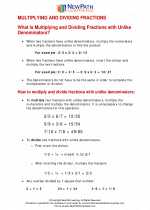 Multiply/Divide Fractions
Multiply/Divide Fractions  Worksheet/Answer key
Worksheet/Answer key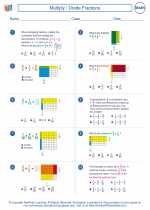 Multiply/Divide Fractions
Multiply/Divide Fractions  Worksheet/Answer key
Worksheet/Answer key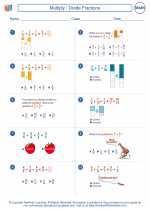 Multiply/Divide Fractions
Multiply/Divide Fractions  Worksheet/Answer key
Worksheet/Answer key Multiply/Divide Fractions
Multiply/Divide Fractions  Worksheet/Answer key
Worksheet/Answer key Multiplying and Dividing Fractions
Multiplying and Dividing Fractions  Worksheet/Answer key
Worksheet/Answer key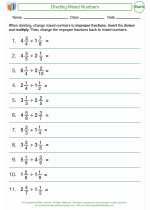 Dividing Mixed Numbers
Dividing Mixed Numbers  Worksheet/Answer key
Worksheet/Answer key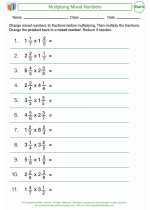 Multiplying Mixed Numbers
Multiplying Mixed Numbers 

 Worksheet/Answer key
Worksheet/Answer key
 Worksheet/Answer key
Worksheet/Answer key
 Worksheet/Answer key
Worksheet/Answer key
 Worksheet/Answer key
Worksheet/Answer key
 Worksheet/Answer key
Worksheet/Answer key
 Worksheet/Answer key
Worksheet/Answer key

Create And Print more Fractions worksheets with Comparing Fractions, Equivalent Fractions, and Simplifying Fractions
The resources above cover the following skills:
Number and Operations (NCTM)
Understand numbers, ways of representing numbers, relationships among numbers, and number systems.
Work flexibly with fractions, decimals, and percents to solve problems.
Understand meanings of operations and how they relate to one another.
Understand the meaning and effects of arithmetic operations with fractions, decimals, and integers.
Compute fluently and make reasonable estimates.
Select appropriate methods and tools for computing with fractions and decimals from among mental computation, estimation, calculators or computers, and paper and pencil, depending on the situation, and apply the selected methods.
Develop and analyze algorithms for computing with fractions, decimals, and integers and develop fluency in their use.
Grade 6 Curriculum Focal Points (NCTM)
Number and Operations: Developing an understanding of and fluency with multiplication and division of fractions and decimals
Students use the meanings of fractions, multiplication and division, and the inverse relationship between multiplication and division to make sense of procedures for multiplying and dividing fractions and explain why they work. They use the relationship between decimals and fractions, as well as the relationship between finite decimals and whole numbers (i.e., a finite decimal multiplied by an appropriate power of 10 is a whole number), to understand and explain the procedures for multiplying and dividing decimals. Students use common procedures to multiply and divide fractions and decimals efficiently and accurately. They multiply and divide fractions and decimals to solve problems, including multi-step problems and problems involving measurement.
Connections to the Grade 6 Focal Points (NCTM)
Number and Operations: Students' work in dividing fractions shows them that they can express the result of dividing two whole numbers as a fraction (viewed as parts of a whole). Students then extend their work in grade 5 with division of whole numbers to give mixed number and decimal solutions to division problems with whole numbers. They recognize that ratio tables not only derive from rows in the multiplication table but also connect with equivalent fractions. Students distinguish multiplicative comparisons from additive comparisons.